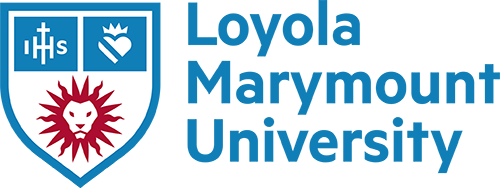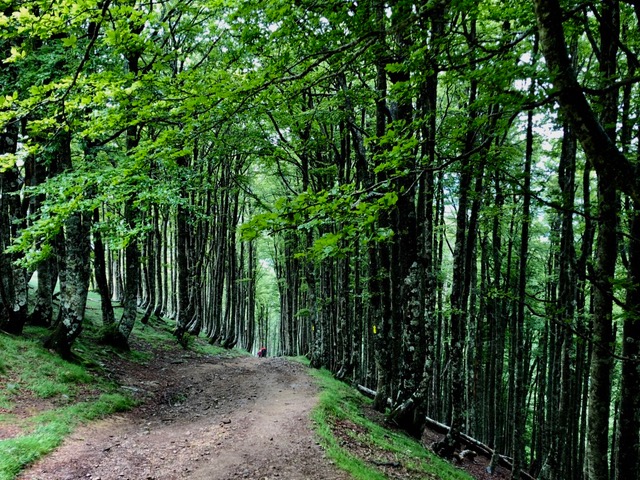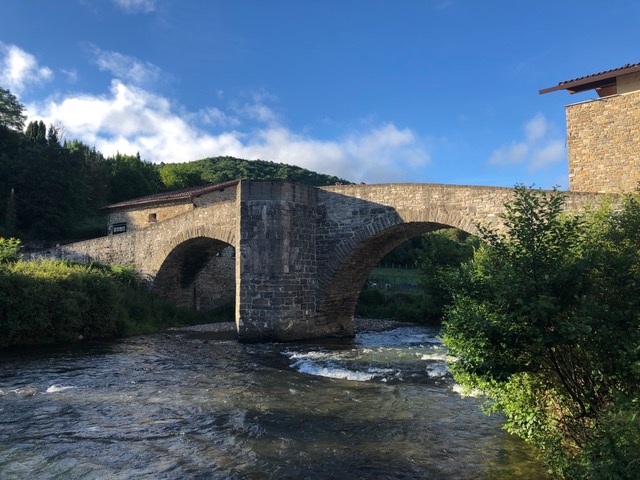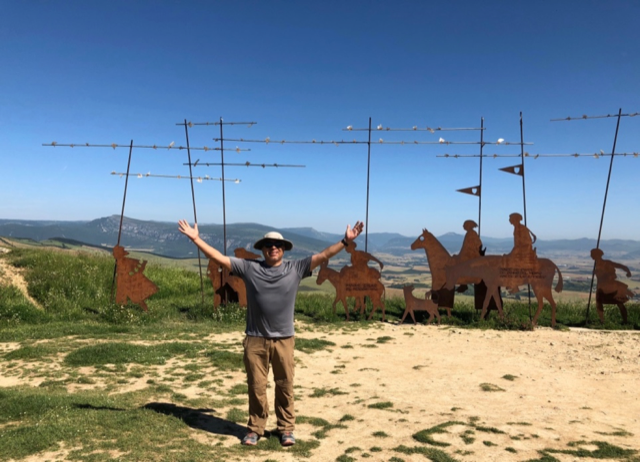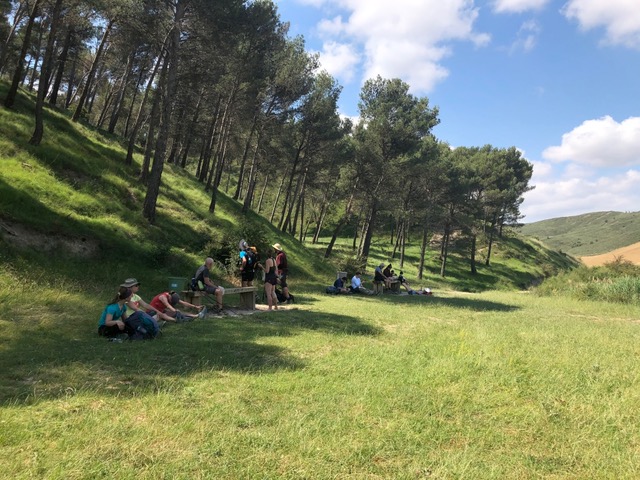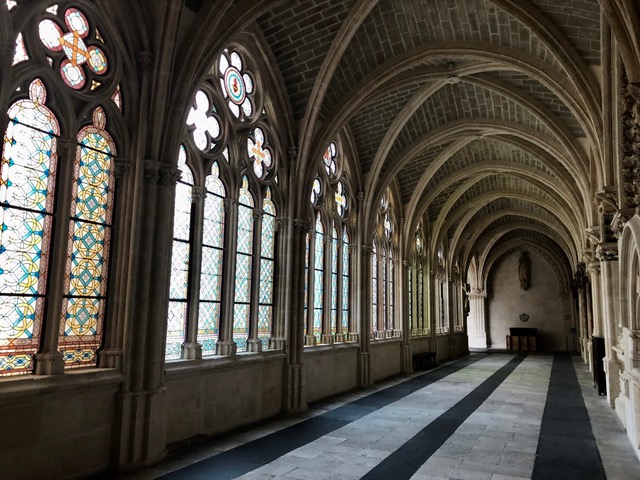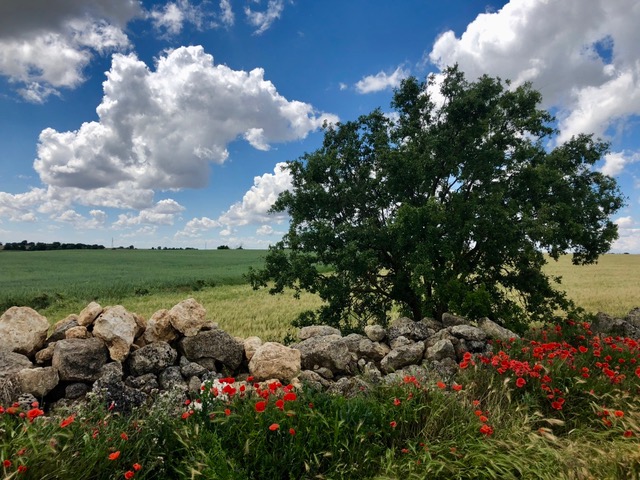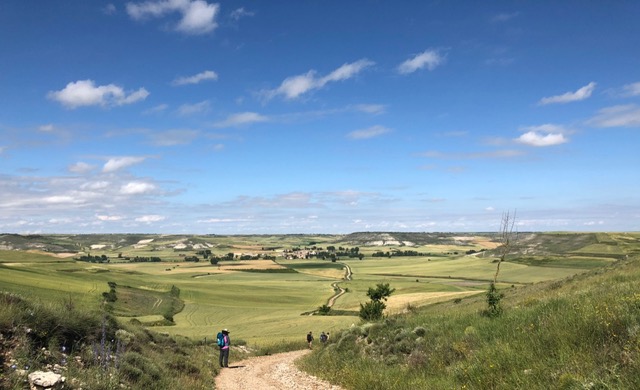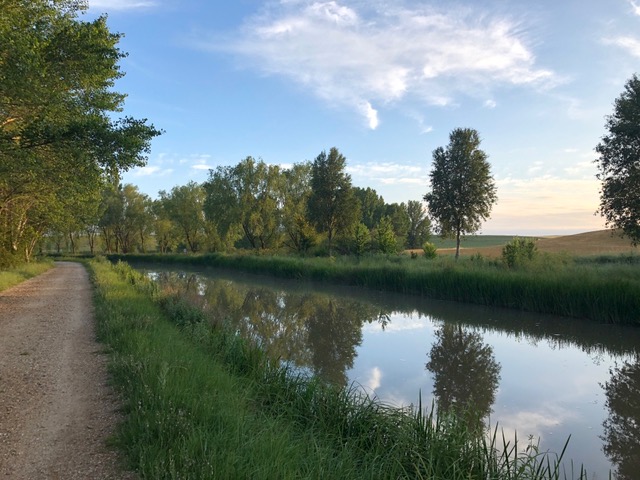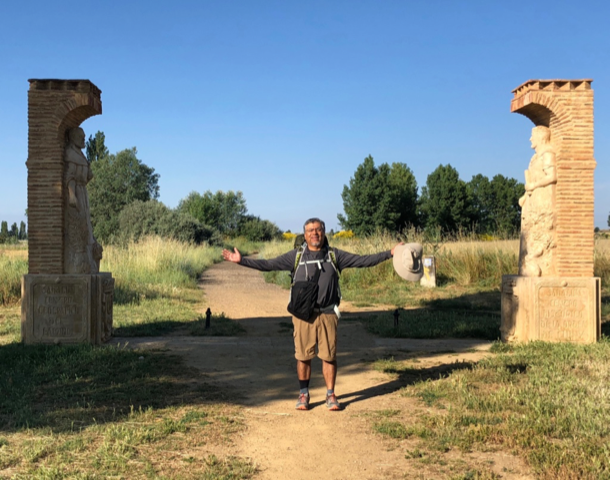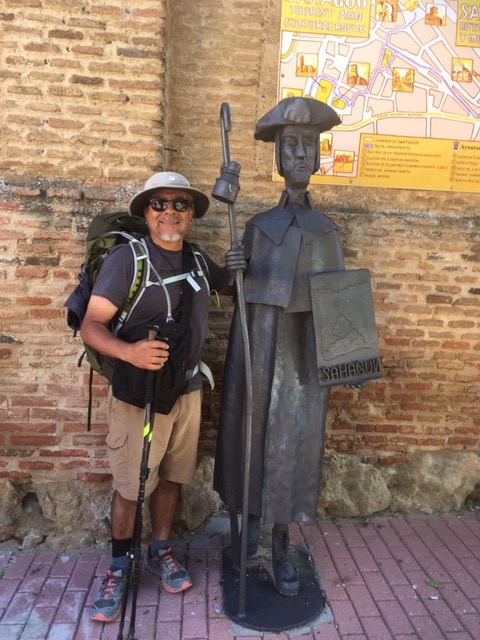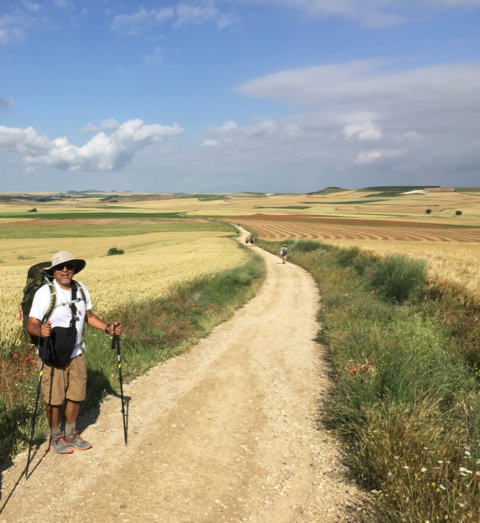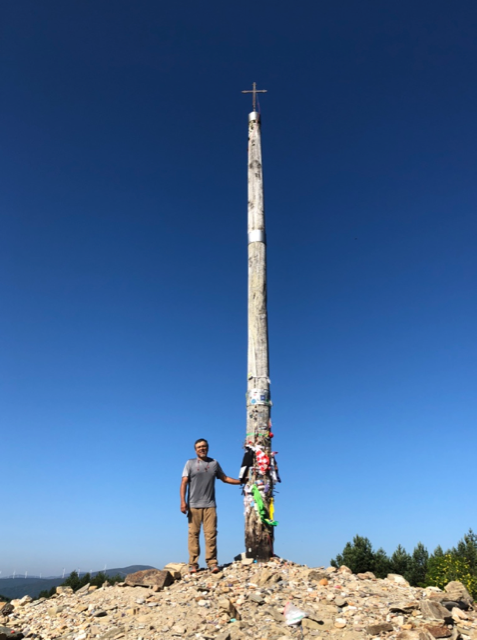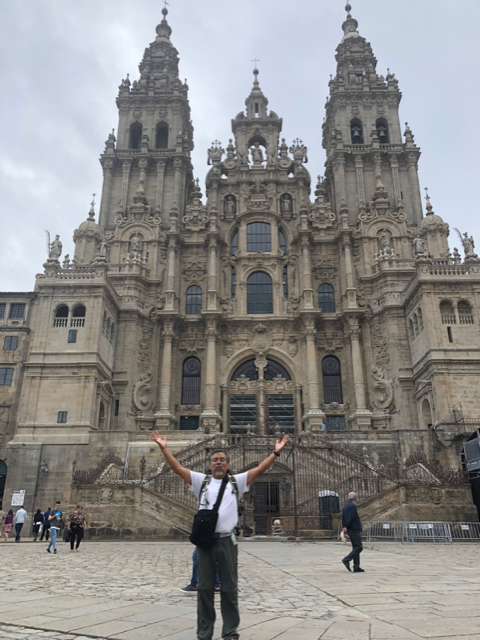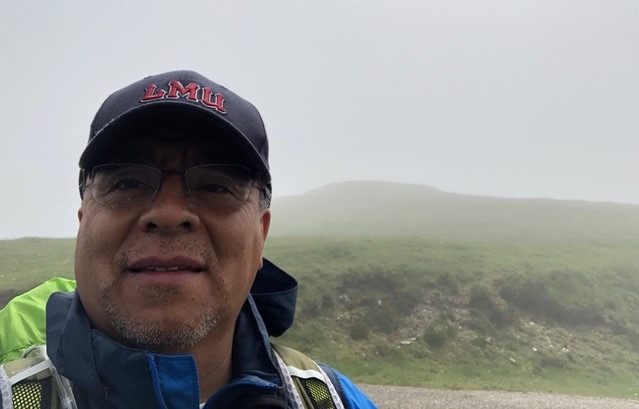
Gabriel Saavedra M.A. ’20 shocked his professors and classmates when he returned from summer break to start his second year of the Theological Studies Graduate program at LMU. Thirty pounds lighter and emitting an aura of vibrancy and life, Gabe was hardly recognizable. A high-spirited and outgoing deacon, he had always been amiable and passionate about his faith and studies, but somewhere between June and August a physical, mental, and spiritual transformation took place that now caused others to do a double-take. When asked what was responsible for his new lease on life, Gabe, full of thought and reflection, replied “I went on the Camino de Santiago… and it was one of the best experiences of my life.”
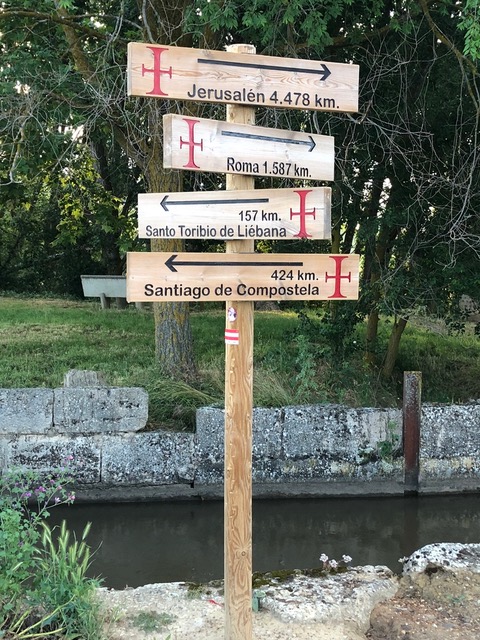
While BCLA offers its graduate students a variety of core classes and electives that can be taken during the summer, on campus and abroad, it also promotes creativity and encourages students to fine tune their curriculums in order to pursue unique interests and career goals. One way that students make the most of this flexibility while still benefiting from the robust knowledge-base of the faculty, is by partnering with professors to research and develop Independent Studies courses that they can take for credit toward their degrees. When Gabe, who’d felt drawn to the Camino for over 20 years, finally decided to heed the call, he lost no time pitching it as a class concept to Grad Director Brett Hoover and Department Chair Doug Christie.
After researching Summer Camino programs offered by other U.S. colleges and working out themes, objectives, and assignments with Christie, Gabe designed a detailed and scholarly syllabus that the Office of the Registrar approved as a 3-unit course. In addition to studying the historical and theological development of the Camino beforehand, Gabe would take time to journal every day of his voyage and then prepare a 30-page paper upon his return. On June 12th, 2018, with his writing supplies, hiking pack, and passport at the ready, Gabe departed for his transcontinental pilgrimage to Santiago de Compostela.
Q: For those of us who are unfamiliar with the history of the Camino, how would you describe it?
A: The Camino de Santiago is an ancient pilgrimage. Scholars believe it began as a Roman trade route, with travelers following the the Via Láctea (the Milky Way) in the night sky all the way to the Atlantic coast of Galicia, Spain. This end point was named Finisterrae, which in Latin means “the end of the world.” Here, a temple to the Celtic god of the Otherworld/dark sea was built so that travelers might honor the deity of the great dark sea and world beyond this one. When Christianity took over in the region, the bones of Saint James were located near Finisterrae (on Mount Libredón, now the holy city of Santiago de Compostela). Alphonso II, the King of the Iberian Peninsula, walked from Oviedo, Spain to Compostela to verify the remains, and his journey became the first Christian pilgrimage there. Up until this period, many Christians had been trying to do the pilgrimage to the Holy Land, but with the Muslim conquest of Jerusalem in the 7th century and the political turmoil in Europe up through the 9th century, it was incredibly difficult if not impossible. Cut off from Jerusalem, Christians needed a new place to go. Santiago de Compostela was available and routes across northern Spain were accessible, so people from all over Europe switched their paths from going east to going west in order to make the trek. As a result, there are multiple Caminos from all over the continent going into Santiago.
Q: Which path did you take?
A: I took the The French Way, which is sort of one of the meeting points of different paths, beginning in St. Jean Pied de Port in southern France. From there you backpack over the Pyrenees, hiking down and across Spain into Santiago de Compostela. I began on June 12th, when I left my home. As soon as you leave your home, that’s when you start your Camino. I flew out and did a little bit of sight-seeing. I began in Barcelona and then I went to Montserrat to see the Black Madonna. From there I went to Lourdes, France, and then from Lourdes I was about 50 miles away from my starting point in St. Jean.
Q: Aside from all of the research you put in up front, are there any preparations you would recommend to someone considering the Camino?
A: You really need to be ready for it. For me there was a lot of physical training going on ahead of time because you have to be able to walk 500 miles, doing 15-16 miles per day. I was on the trail 33 days and I rested 2 days. I lost 12lbs just preparing to do the Camino, and then I lost 18lbs on it.
In the beginning of the trail, you tell yourself, “I think I can do it, maybe I can do it.” But then your body starts falling apart, and your self-confidence starts falling apart, and you’re destabilized in so many different areas. You’re in a new country with a new language and new locations. Your body is doing something new. Your emotional experiences are new. You’re destabilized in all areas, and in that destabilization is when you’re most open to God. That’s what the pilgrimage is all about. I really can’t tell you exactly what happens – that is, I don’t know how to put it into words – but it really changed me. I saw different perspectives in so many different ways.
Q: Can you give an example of a new perspective you discovered?
A: Just off the top of my head I do have one that might not seem like a big deal to others, but it is to me. I’m a very organized and regimented person, especially when I go on a trip. I have all of my papers, tickets, and schedules set. If my family comes along, it’s like, okay agenda time – we’re going here, here, here, and here. There’s very little downtime. We’re going to go to this museum, that museum; now we’re here, now we’re there. Well, at the end of the Camino I left Santiago, drove to Madrid, got to my hotel, and I didn’t want to go anywhere. I met up with some friends, we sat in a café, and I sat in that café for over two hours on the street corner. I’ve NEVER done that in my life. We just sat there watching life go by, and I was perfectly fine with it. I had to ask, “Why haven’t I done this before? Why haven’t I stopped and watched the world?” I was always so interested in being a part of it and doing this and doing that, that I never really experienced people and places in that way. It was a new vantage point from which to see and appreciate life happening all around me.
Q: Did the Camino change the way you interact with the world?
A: It definitely did. Whether I’m on the freeway or walking somewhere, it’s different now. You see so many people on the Camino – sometimes you’re with them, sometimes you’re not, sometimes you catch up again, and you have these interfaces with these different people. There was this one 19-year-old girl from Ireland that I happened to walk with on the Spanish plains (the Meseta), which is five days of hot, flat, wheat fields. A lot of people bus around them because they say, “Oh it’s boring, we’re just going to go around it.” But it’s at that point, when you’re completely bored and uncomfortable… those are the times that it hits you. The rolling wheat fields and even the heat – I thought it was beautiful. So I’m walking with this girl and she says, “Isn’t this beautiful?” and I say, “Yes it is! It’s beautiful, look at this! Look at the world around us – why do people bus around this?!” It was a gorgeous thing. She answered, “Well some people left at like 5 o’clock in the morning because they want to get to the next town,” and I replied, “Why do they want to rush it? We need to experience the Camino, not rush through it. Not rush to get to the other side. What are you going to do, do your laundry faster? You’re going to get your bed faster? You’re going to eat dinner faster? And then what are you going to do? Wait for everyone else to come so you can finally have fun.” And it hit me – how much is that the case with life? We’re always rushing and not experiencing. It took a young 19-year-old Irish girl on the plains to help me start understanding that. I probably never would have gotten it if I wasn’t on the Camino, if I wasn’t destabilized and open. I certainly never would have met that inspiring girl.
Q: What were your accommodations like? Did you have comfortable places to sleep at night?
A: In the evenings I stayed in albergues (pilgrim hostels) along the way, which was a big thing for me. Originally, I had planned on staying in hotels, sending my backpack ahead via a courier, and just walking. Then I felt the spirit of God say, “You know, you really need to make this a pilgrimage. You really need to carry your bag. You really need to make an attempt to do this fully,” and so I did. The albergues were tough – you get a top or a bottom bunk bed, you hear everybody snoring, there’s no air conditioning, just ceiling fans, and its hot in the summer in Spain; but the camaraderie you build with the other pilgrims is amazing. You’re walking with all of these people from all over the world, and then you get to the next town where you can eat dinner and it’s all, “Hey, where are you staying?” “Where are you staying?” “Oh, you’re staying there? Okay good, I’m staying there!” At the albergues everybody is outside talking, drinking café con leche or wine, eating bread and cheese, and having a good time into the night. Then at 10 o’clock the albergue doors close and the lights go out, so you have to go inside and go to sleep. There’s a little bit of rigidity to it, but it is also a nice sequence. After two weeks of living that way, I spent the night at a hotel and felt totally lonely. I was like, “Wow, my friends aren’t here. This isn’t very fun, I’d rather be with them.” The very next night I went right back to the albergues – “Where are you guys staying?” “Where are you staying?” “Okay, what time are you leaving in the morning?” You catch up with them and you go with the community. You’re constantly building these communities along the way.
Q: How did the different communities you walked with respond to you being a deacon in the Catholic Church?
A: I did not go out and tell people I was a deacon, I just said “My name is Gabe,” went from there, and walked on. I was just Gabe. As I was walking, I met a large group of people from Denmark – it fluxed anywhere from six to eight people, but they mostly stayed together and I was the only person from outside of Denmark with them. As I got to know them, I started talking to one of the girls who was paired off with this guy who she was dating. I asked her, “How long have you been with Nikolai?” She said, “Oh, we’ve been together eight years,” and I said, “Eight years?! What are you, like 27, 28?” She told me she was 27 and I said, “Wow, so you’ve been with him since you were young. Are you guys married?” She said they weren’t, and when I asked her why not she said, “Well, I don’t want to push him.” I wanted to explain to her that it’s not pushing, but I also didn’t want to act like I was her dad so we just kept walking. A few days later Nikolai and I were walking together and he asked me if I was going to Finisterre, which is where the ocean is, at the end of the Camino. I told him I wasn’t and that I was going to Fatima instead, where the Virgin Mary appeared. Disappointed, he responded, “Well heck – you’re not going to Finisterre, so-and-so’s not going, nobody is going! It’s just going to be Christine and I. What are we going to do there?!” I said, “Well… maybe you can do something romantic. Maybe you can take her to the ocean and you can get on one knee and maybe you can talk about your future life together.” [Gabe is laughing as he tells the story] Nikolai is a good guy, but sometimes he tries to play the hot-shot and be a cool guy, so he was like, “Forget you, stop putting these weird thoughts in our heads. We’re perfectly fine. Leave us alone!” I laughed and said, “I AM leaving you alone. You asked ME ‘What are we going to do there?’ and I’m giving you ideas!”
So anyway, the Danes and I all had an evening together after we finished in Santiago de Compostela. We were celebrating that we’d finished, and Nikolai asked me what the Camino had been like for me. The others, who had already found out I was a deacon on account of me always leaving the table immediately after dinners to go and pray the Liturgy of the Hours, asked me how long I’d been married and then wanted to know what 36 years of marriage had been like for me. I told them all, “Well 36 years of marriage is a lot like the Camino. There’s ups, there’s downs, there’s rainbows and meadows, there’s rocks, hurts, and healing, and then there’s misty mornings followed by hot sun… it’s a beautiful, lifelong journey. I made a commitment to my wife and to God, and that’s where I am – I’m on the covenantal journey.” Nikolai looked at me and said, “Okay, that’s good to hear. Well that’s it then…” He pushed back his chair, got on one knee, pulled a newly purchased ring out of his pocket, and proposed to Christine right there at dinner. So of course, I pulled out my phone and started trying to video the whole thing! Then they both asked me if I would marry them. I had to explain that I couldn’t because they were Lutheran. Christine responded, “Well I want to become Catholic. Just from your Catholic example of Christianity, I’d rather be what you are than what I am. My faith is just a state religion, it’s clinical and doesn’t mean much to me. What you’re showing me about Christianity is completely different, and its what I want to be.”
I never thought I was giving them any example… I was just being their friend and walking with them and talking with them. It was powerful experience. So this coming summer, my wife and I are going to Denmark, because we’re invited to their wedding.
Q: It sounds like you had so many incredible experiences. Do you feel like you found what you were looking for on your pilgrimage?
A: I thought that in walking the Camino, I was going to experience a long and challenging, retreat-like backpacking trip. What I found was a spiritual and physical transformation. I went into it with no real discovery agenda – I just felt called to do the Camino, but I did not know why. I prayed that God would lead me on this trip and show me what He wanted me to do while I was there. I came back different, and friends that I’d been in class with for two semesters were like “Gabe? Is that you?” “Yes, I am Gabe. I went on the Camino de Santiago… and it was one of the best experiences of my life.”

